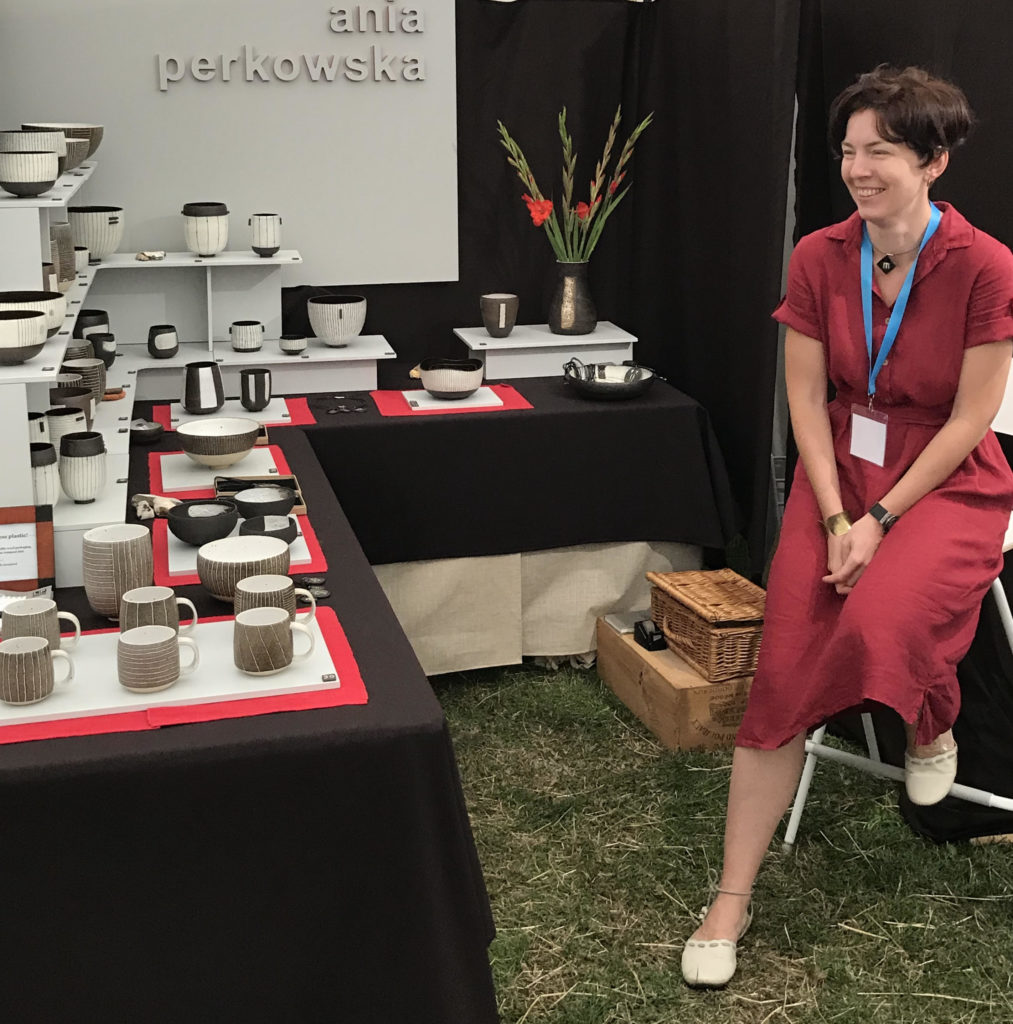Ania is a London based studio potter. She initially started as a handbuilder. Over the years she tried number of different ceramic techniques, from coiling to experimental raku firings. In the end it was the minimalist wheel thrown pieces that most suited her style.
Ania’s work is recognised for contrasting rough black clay with the smoothness of porcelain. In addition, the organic, hand carved stripes are the signature pattern of her pieces.

Inspirations
Primary inspiration for Ania’s work comes from the masters of British studio ceramics: Lucie Rie and Hans Coper. The elegant shapes of Rie had been a huge influence. Some of Ania’s glazes have also been developed from the original Lucie Rie’s recipes. In addition, the round, “huggable” shapes bear clear echo of Hans Coper’s work.
In 2007 Ania went to Japan, which had been another significant turning point in shaping her aesthetics. The small foot rings and side lugs are clear evidence of Japanese influence.
“I was astounded with a huge variety of styles and techniques. But also how playful and brave some of the pots were. The challenge then was how I can apply that in my own work. When you’re at the beginning of your ceramic journey, it’s so easy to get overwhelmed. There are so many different things you’ll want to try. It is difficult not to get too distracted, find your own voice and your own style which you can then develop “
Current work
Ania continues to make functional pottery but is also becoming increasingly interested in decorative statement pieces.
“I really enjoy making ceramics that can be used. There is something joyful and intimate in creating an object that people will use every day, for instance for their morning coffee. This creates very direct, almost physical connection with the user. And this is why the tactility of my work is so important. I want to inspire the senses. The surface of my pots needs to be interesting not just to look at but also to touch.”
Therefore the form and surface decoration is perhaps more important to Ania than the colour. As a result, she applies various techniques to the pots. For instance burnishing with a stone or a light bulb, or scraping with metal kidneys.
“Burnishing is a particularly fascinating technique. It has been used since ancient times to seal pottery, before the invention of glazes. You can get different effect depending at what stage you do it, what tools you use. There is also something meditative about the process itself. It does require a lot of patience and it is easy to damage unfired pots in the process.”
The sgraffito patterns, hand carved through the slip, are deliberately irregular. So not only they create an organic feel but make each piece unique.
Ania’s work has certain quiet quality and elegance to it. Her restrained use of colour encourages the focus to move to the shape and function. It invites you to come closer, connect with the piece, pick it up and touch it.
See Ania’s work available on Cambridge Ceramics online gallery, or visit her website for most up to date news.

